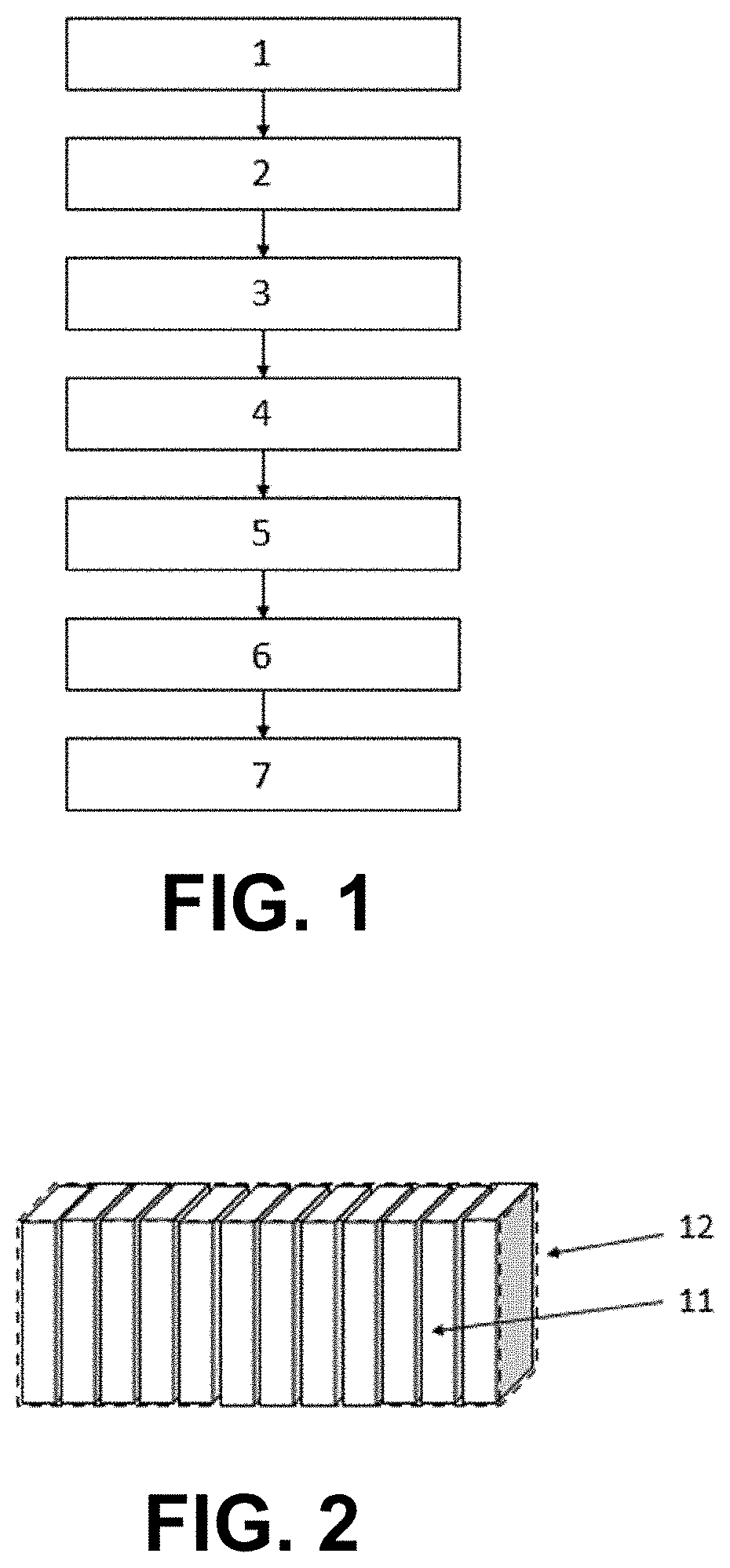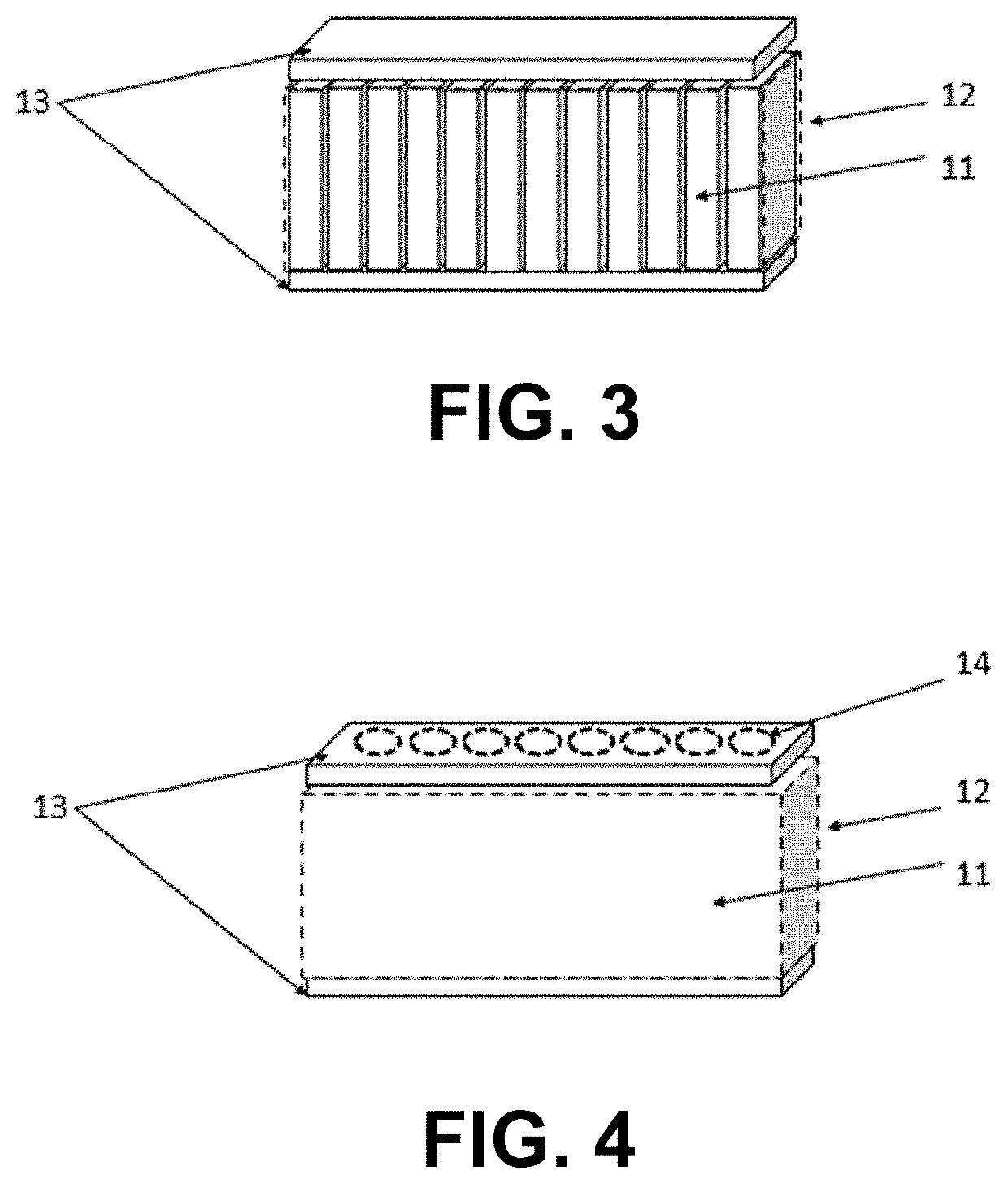Method for manufacturing stoppers intended for bottling still wines and corresponding stoppers
a technology of stoppers and still wines, applied in the field of cork stoppers, can solve the problems of affecting the flow of oxygen, affecting the quality of still wines, and affecting the quality of still wines, and the absolute absence of oligomers of very low molecular weight which can migrate into the conten
- Summary
- Abstract
- Description
- Claims
- Application Information
AI Technical Summary
Benefits of technology
Problems solved by technology
Method used
Image
Examples
Embodiment Construction
[0039]The manufacturing method according to the invention allows solving the technical problems identified in the related art and is illustrated in FIG. 1.
[0040]During a first step 1, cork strips 11 and lateral cork strips 13 are made from raised and boiled cork.
[0041]The cork strips 11 have a thickness comprised between 0.8 mm and 2 mm, and are cut such that the lenticels potentially present in these strips are implanted parallel to the thickness of the strips. The lenticels therefore potentially pass through the blades according to their thickness.
[0042]Likewise, the lateral cork strips 13 are cut such that the lenticels potentially present in these strips are implanted perpendicular to the thickness of the strips. No lenticels therefore pass through the thickness of these blades.
[0043]As will be seen below in the present description, the cork strips 11 and the lateral cork strips 13 are assembled in parallelepipeds wherein the stoppers are formed. The lateral cork strips 13 also ...
PUM
 Login to view more
Login to view more Abstract
Description
Claims
Application Information
 Login to view more
Login to view more - R&D Engineer
- R&D Manager
- IP Professional
- Industry Leading Data Capabilities
- Powerful AI technology
- Patent DNA Extraction
Browse by: Latest US Patents, China's latest patents, Technical Efficacy Thesaurus, Application Domain, Technology Topic.
© 2024 PatSnap. All rights reserved.Legal|Privacy policy|Modern Slavery Act Transparency Statement|Sitemap



